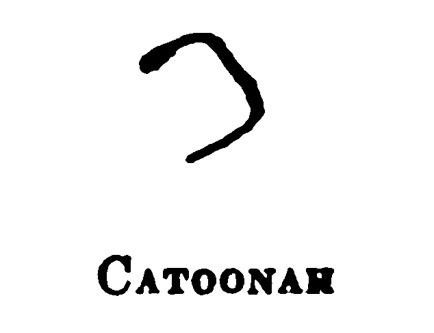Preceded by Powahay Parents Onox | Children Wackemawa ,Papiag | |
 | ||
Resting place Katonah's Wood, off Rt. 22 Spouse(s) Cantitoe, also called Mustato Relations Father, Onox (the older); grandfather, Ponus. Uncles, Tapgow (Taphance) and Owenoke. Brother, Onox (the younger). Eldest son, Wackemawa (Wawkamawe), Son, Papiag (Pohag); daughter married Sam Mohawk (Chickens Warrups) | ||
Chief Katonah was a Munsee sachem for all Wiechquaeskeck in the Greenwich, Stamford, and Bedford area, from whom the land of the town of Bedford, New York was purchased. He was sachem of the Ramapo. The Ramapo Sachemdom was part of the Tankiteke Chieftaincy of the Wappinger League, of the Mohegan tribe of the Algonquians.
Contents
Biography
Katonah was the sachem of the condensed remnant tribes called the Ramapo. He lived in the area in the late seventeenth century. Records show that in 1708 the Ridgefield settlers petitioned the General Assembly at Hartford to remove the Ramapo. Katonah sold the Ramapo lands of 20,000 acres for 100 Pounds Sterling to the "Proprietors of Ridgefield". His name appears on land deeds up to 1743. The Remnant tribe of the Ramapo scattered to the north and west. Chief Katonah was the son of Onox (the elder) and the grandson of Ponus, Sachem of the Rippowams. Katonah had a brother named Onox and a son named Papiag who also signed land deeds. Katonah was the successor to Powahay, his brother. Katonah's daughter married Samuel Mohawk alias Chickens Warrups. Tapgow, son of Ponus, signed many land deeds in northern New Jersey including the Schyuler Patent or the Ramapo Tract Deed in 1710 in northern New Jersey.
Legend has it that he died of grief after his wife, Cantitoe, sometimes known as Mustato, and their son, Papiag, were killed by lightning. Chief Katonah is said to be buried with his wife and son in Katonah's Wood, off New York State Route 22. The Chief, as the story is told, is said to be buried beneath a giant boulder, and his wife and son are buried beneath two smaller immediately adjacent boulders. This is recounted by William Will's poem Katonah. Cantitoe was said to be of the Pompton tribe.
Legacy
The hamlet of Katonah, New York, located within Bedford, is named for Chief Katonah.
In 2007, Martha Stewart Living Omnimedia applied for a trademark on the Katonah name for a line of furniture. Members of the Ramapough Lenape Nation who are descendants of Katonah joined forces with local residents to oppose it.
